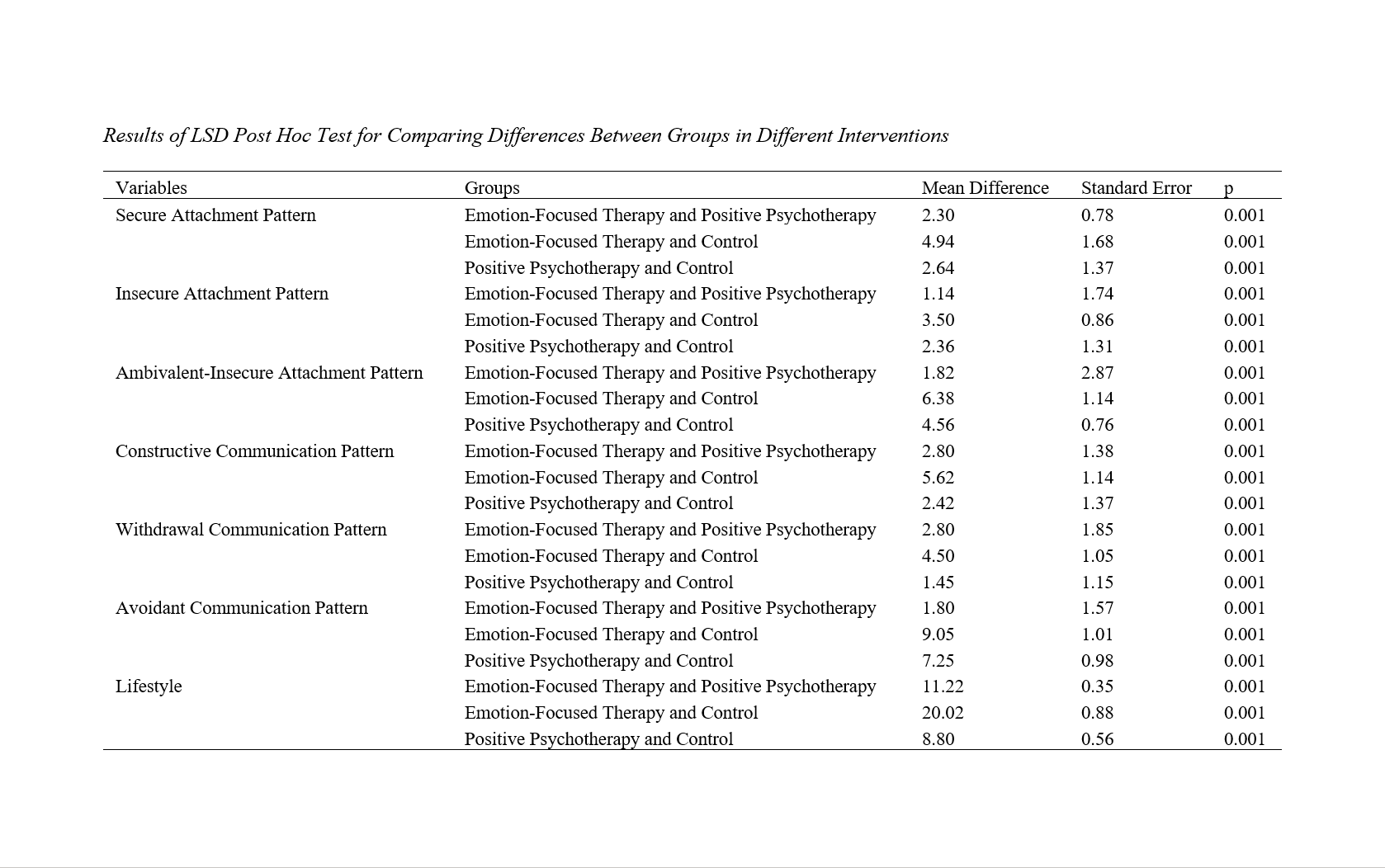Comparison of the Effectiveness of Positive Psychotherapy and Emotion-Focused Therapy on Attachment Patterns, Communication Patterns, and Lifestyle of Incompatible Couples
Keywords:
Positive Psychotherapy, Emotion-Focused Therapy, Attachment Patterns, Communication Patterns, LifestyleAbstract
Objective: The aim of this study was to compare the effectiveness of positive psychotherapy and emotion-focused therapy on attachment patterns, communication patterns, and lifestyle of incompatible couples who referred to counseling centers.
Methods: This study is applied research in nature and quasi-experimental in execution, utilizing a pre-test and post-test design with a control group. The statistical population included all couples with incompatible spouses who referred to counseling centers (Behesht Counseling Center) in Isfahan in 2022. From this population, 45 individuals were selected using convenience and purposive sampling and divided into three groups: two experimental groups (each with 15 participants) and one control group (15 participants). The first experimental group underwent Goodwin's positive psychotherapy (2018) in ten sessions, and the second experimental group underwent Johnson's emotion-focused therapy (2006) in eight sessions. The questionnaires used in this study were Hazan and Shaver's Attachment Questionnaire (1987), Christensen and Sullaway's Communication Patterns Questionnaire (1984), and Miller-Smith's Lifestyle Questionnaire (2003).
Findings: Using covariance analysis, the results indicated that, after controlling for pre-test levels, there were significant differences between the experimental and control groups of incompatible couples in terms of attachment patterns (secure, avoidant-insecure, and ambivalent-insecure), communication patterns (constructive mutual), communication pattern (demand/withdraw), communication pattern (avoidant), and lifestyle. The effect size was 0.48 for emotion-focused therapy. Similarly, significant differences were observed for positive psychotherapy with an effect size of 0.41. There was a significant difference in the effectiveness of positive psychotherapy and emotion-focused therapy on attachment patterns (secure, avoidant-insecure, and ambivalent-insecure).
Conclusion: Overall, the results indicate that emotion-focused therapy has a greater impact on attachment patterns (secure, avoidant-insecure, and ambivalent-insecure) compared to positive psychotherapy. Significant differences were also observed in the impact on communication patterns (constructive mutual, demand/withdraw, and avoidant) and lifestyle, with emotion-focused therapy showing a greater effect.
Downloads

Downloads
Additional Files
Published
Issue
Section
License

This work is licensed under a Creative Commons Attribution-NonCommercial 4.0 International License.




















